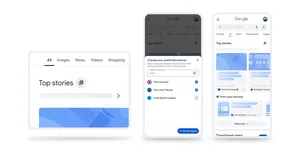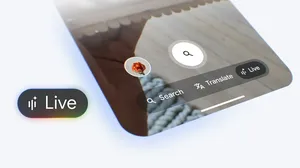How one digital book led to an important COVID-19 discovery

For 18 years, the Google Books Library Project has digitized and cataloged books to help users around the globe discover them and the information they contain. When a volume is digitized, the book and its contents become more accessible and useful to the world. Even one decades-old story can act as a puzzle piece, with the potential to unlock connections and solve previously insurmountable problems.
Perhaps nothing has highlighted the vital nature of this work like the COVID-19 pandemic. In early 2020, many scientists believed that particles containing COVID-19 were too large to be airborne. Medical canon held that only particles sized 5 microns or smaller could stay in the air long enough to be transmitted between people over 6 feet apart. But a team of scientists questioned the 5 micron figure. Katie Randall, then a graduate student at Virginia Tech, went to work investigating the origin of the number. “I was working on my dissertation when the pandemic hit, and I had to pause in-person research,” says Katie. “I was supposed to focus on revising my research plan, but when I got the email about this project, I knew I couldn’t say no — it was too important and too intriguing to ignore.”
In her research, Katie located an out-of-print book, Airborne Contagion and Air Hygiene: An Ecological Study of Droplet Infections, written by William Firth Wells in 1955. While she normally would have borrowed the book through an agreement between libraries to share items in their collection, pandemic closures meant that was not an option. Fortunately, she was able to locate a digital copy of the book in HathiTrust, a Google Books partner.
HathiTrust is a nonprofit collaborative of academic and research libraries which preserves digitized items — most of which come from partnerships with Google Books. “Early on, our partner libraries dedicated themselves to digital preservation,” says Mike Furlough, Executive Director of HathiTrust. “But even when preservation was the goal, our thoughts were always on providing access for research and scholarship.”
With the help of the digitized book, Katie discovered that the 5 micron threshold had no real scientific basis — in fact, the experiments detailed in Wells’ book showed the aerosolization of particles as big as 100 microns. Further research showed that Alexander Langmuir, then head of the newly formed CDC, had publicly dismissed Wells’ findings. Langmuir insisted that particles larger than 5 microns would simply fall from the air onto surfaces, and the 5 micron number stuck. While Langmuir eventually recognized the scientific validity of Wells’ findings and even, in remarks he made in 1980, acknowledged that neither he nor the medical field was prepared to accept the idea of airborne transmission at the time, his admission did nothing to erase the 5 micron figure, which continued to be repeated and cemented as medical canon.
Katie’s discovery allowed the research team to provide concrete evidence that COVID-19 could be transmitted through the air. “One goal of our research was to shift the needle on public health messaging regarding COVID-19,” says Katie. “Ventilation and high quality masks are an important defense against COVID, but also against other airborne diseases.”
Following Katie Randall’s discovery, the Google Books Library Project began a months-long process to find the copyright holder for Wells’ book, in order to get permission to open access to the digital copy to everyone. The search involved publishers, copyright lawyers and genealogical research to locate the living descendants of William Firth Wells. One of them, Martha “Alex” Kahlson, put the Books team in touch with the rest of her family, and it was Martha “Molly” McIntosh, Wells’ grandniece, who enthusiastically granted permission to open the book for full viewing at books.google.com.
This is just one example of information locked away in an out of print book and all but forgotten, waiting to be unlocked through digitization. Google, HathiTrust, and our library partners continue to work to ensure that quality information will always have a place in libraries — both physical and digital — and accessible to curious minds across the globe.






